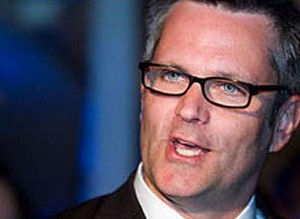 Habitat for Humanity International and Pacific Gas and Electric Company (PG&E) have renewed their partnership for a fifth year to help provide solar power to Habitat homes built in Northern and Central California. Since its inception in 2007, the PG&E Solar Habitat program has assisted in the construction of 250 solar-powered Habitat homes and is on track to build another 83 homes in 2011. The announcement was made July 22 at a Habitat for Humanity for San Luis Obispo County build site in San Luis Obispo, Calif. Habitat for Humanity is dedicated to the cause of eliminating poverty housing. Since its founding in 1976, Habitat has built, rehabilitated, repaired or improved more than 400,000 houses worldwide, providing simple, decent and affordable shelter for more than 2 million people
Habitat for Humanity International and Pacific Gas and Electric Company (PG&E) have renewed their partnership for a fifth year to help provide solar power to Habitat homes built in Northern and Central California. Since its inception in 2007, the PG&E Solar Habitat program has assisted in the construction of 250 solar-powered Habitat homes and is on track to build another 83 homes in 2011. The announcement was made July 22 at a Habitat for Humanity for San Luis Obispo County build site in San Luis Obispo, Calif. Habitat for Humanity is dedicated to the cause of eliminating poverty housing. Since its founding in 1976, Habitat has built, rehabilitated, repaired or improved more than 400,000 houses worldwide, providing simple, decent and affordable shelter for more than 2 million people
With this year’s contribution of nearly $1.2 million, PG&E has donated more than $5.7 million to Habitat for Humanity International to help respond to the housing needs of California families. The contribution is further supported by thousands of hours of educational instruction, skill development and hundreds of volunteer hours that PG&E employees have provided at local Habitat builds across the state.
“The PG&E Solar Habitat project extends the accessibility of affordable solar energy to more Californians,” said Chris Johns, president of Pacific Gas and Electric Company and board member of the PG&E Corporation Foundation. “The money from solar energy, along with the positive environmental impacts, helps contribute to a healthier environment for us all.” “PG&E shares in our passion to help low-income families,” said Larry Gluth, senior vice president of U.S. and Canada for Habitat for Humanity International. “This partnership translates into real savings for Habitat homeowners by lowering energy costs and providing more stable and affordable housing options.” The PG&E Solar Habitat program lowers the electricity bill of an average household by $500 per year. Each solar panel generates nearly 300 kilowatt-hours of clean, renewable energy from sunlight per month, avoiding the release of more than 132,000 pounds of carbon dioxide to the atmosphere over the 30-year life of the system. This year’s donation is the equivalent of taking 950 cars off the road for an entire year.















